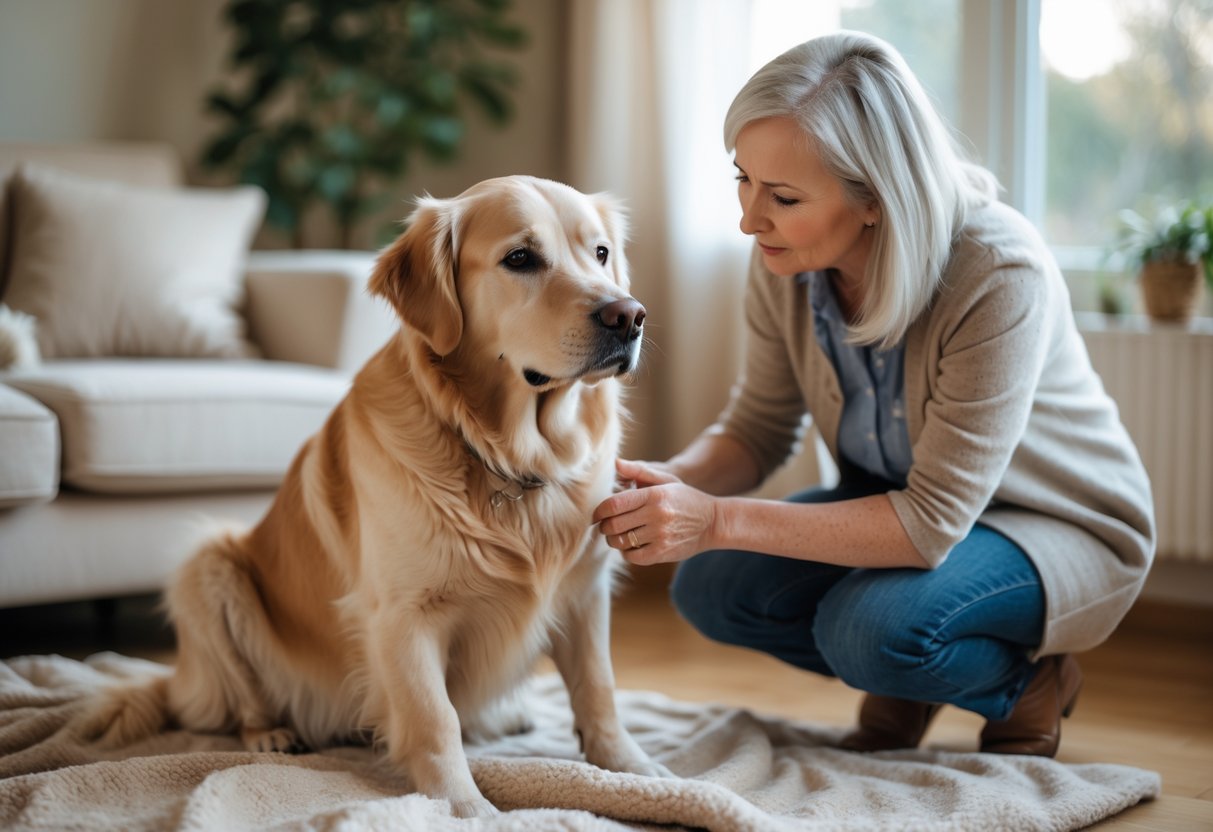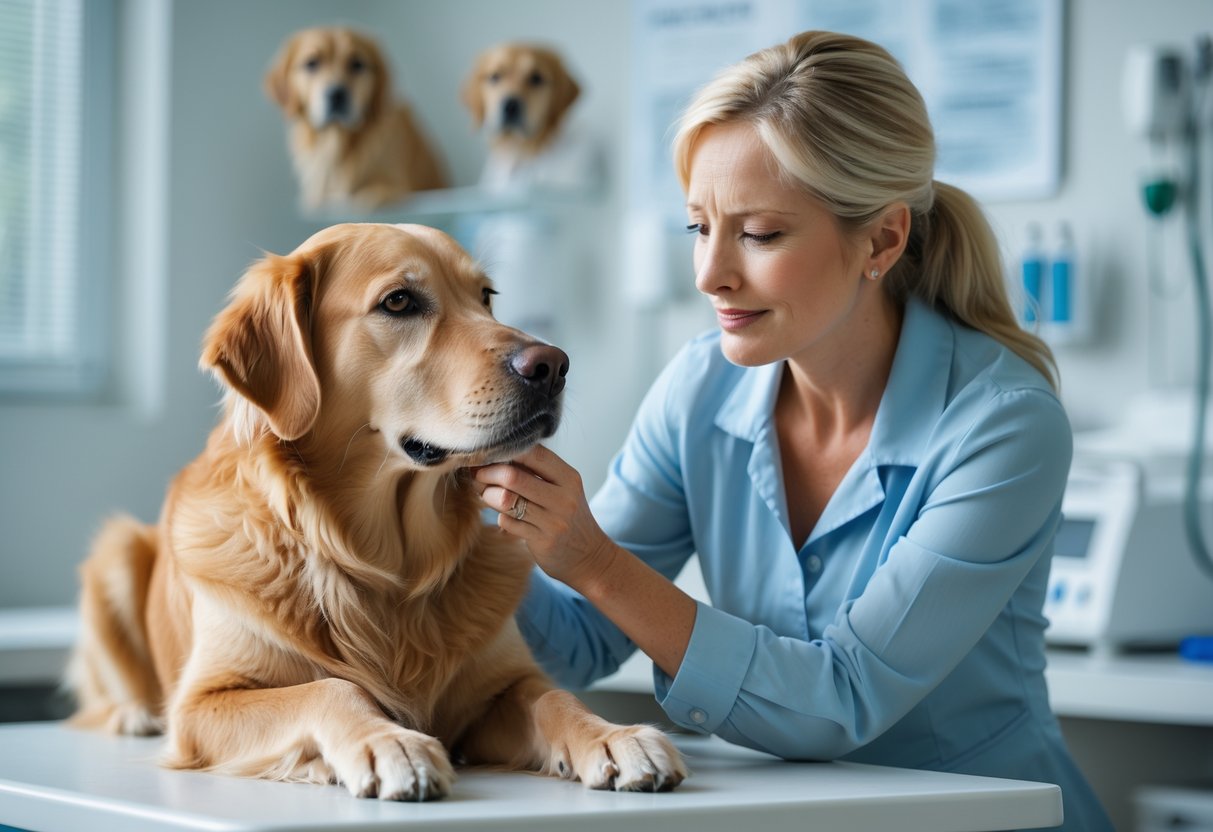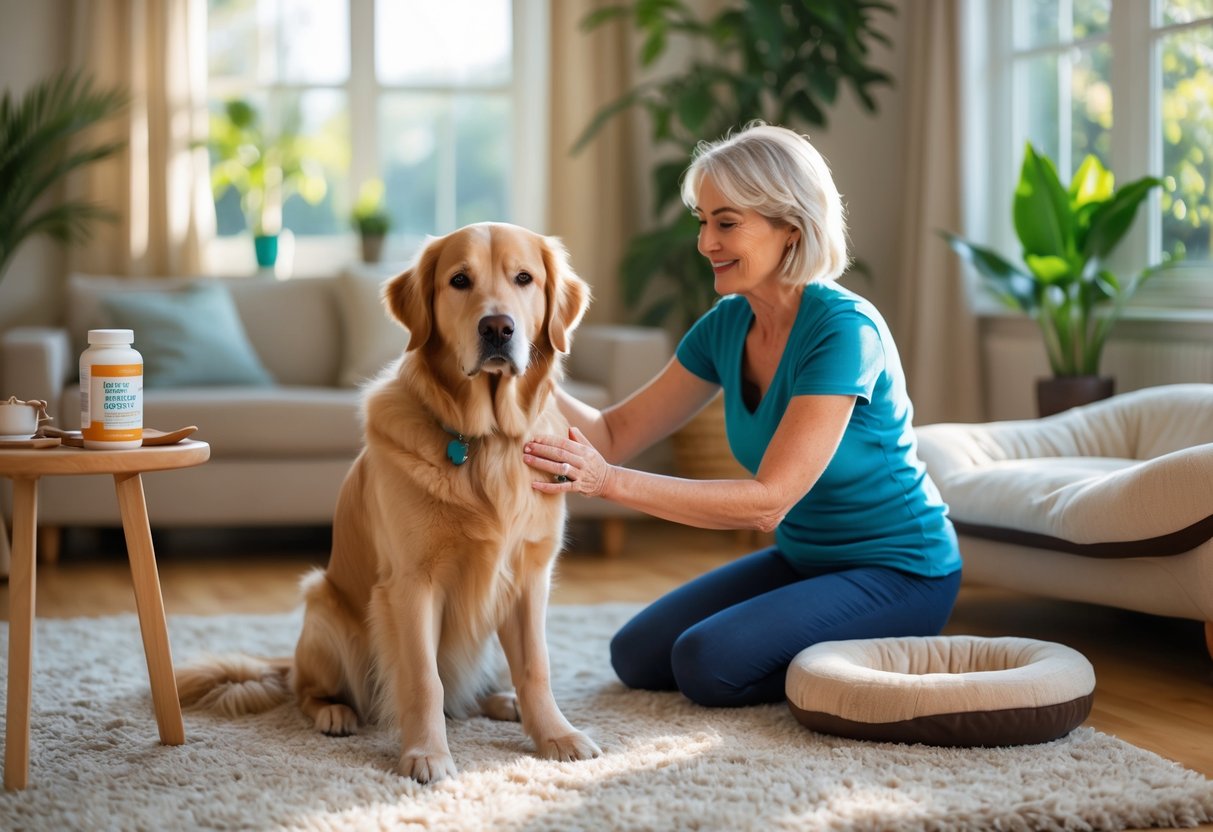Dog arthritis is pretty common, especially as our pups age. It causes joint pain and stiffness that can really slow them down.
You might notice your dog moving more slowly, hesitating on stairs, or even just walking a bit differently. Honestly, sometimes it’s hard to tell if they’re just tired or if something more is going on.
Knowing how to spot arthritis early can make a real difference—catching it means you can help ease their pain and keep them enjoying life.

Managing arthritis is a bit of a balancing act. It usually takes a mix of things: weight control, joint supplements, and gentle exercise.
Your vet might suggest medicines or even therapies you hadn’t thought about. Understanding your options helps you support your dog with a bit more confidence (and a lot less stress).
How to Identify Dog Arthritis Early
Spotting arthritis early can be tricky, but it’s worth the effort. You’ll want to watch for both physical changes and shifts in your dog’s mood or habits.
Some breeds and ages are just more likely to struggle with arthritis. If you know your dog is at risk, it’s good to be extra observant.
Recognizing Early Signs of Arthritis in Dogs
Early signs are often subtle—sometimes, you barely notice them at first. Maybe your dog’s a bit slower to get up, or suddenly hesitates before jumping into the car.
Stiffness after naps or first thing in the morning can be a clue, too. If your dog isn’t as interested in playing or going on walks, that’s worth paying attention to.
Occasionally, you’ll spot swelling or feel warmth around a joint. That’s usually inflammation, which goes hand-in-hand with arthritis.
Physical and Behavioral Symptoms of Canine Arthritis

Physical symptoms might show up as limping, trouble standing, or even some muscle loss in one leg. It’s not always dramatic—sometimes it’s just a little favoring of one side.
Behavior changes can be just as telling. Maybe your dog’s crankier, sleeping more, or suddenly not interested in walks.
Some dogs lick or chew at painful joints, which is easy to miss if you’re not looking for it. If your dog avoids stairs or seems extra stiff after exercise, that’s another red flag.
Understanding Risk Factors and Susceptible Breeds
Age is the big one—most dogs develop arthritis as they get older, but younger pups aren’t immune. It’s not always fair, is it?
Some breeds, like Labs, German Shepherds, and Goldens, seem to draw the short straw genetically. Their size and build just make them more prone to joint issues.
Obesity and previous joint injuries ramp up the risk, too. Carrying extra weight puts more pressure on their joints, speeding things along in a not-so-great way.
If your dog fits any of these categories, regular vet checkups are a good idea. Early detection can really change the game.
Effective Strategies to Ease Your Dog’s Arthritis Pain
Managing arthritis means paying attention every day. You’ll need to spot symptoms, work with your vet, and tweak your dog’s routine to keep them comfortable.

Veterinary Diagnosis and Monitoring
Getting a proper diagnosis is key. Your vet will check your dog’s joints and might use X-rays or blood tests to rule out other stuff.
Once you know what you’re dealing with, regular check-ups help track how things are going. That way, your vet can adjust meds or therapies if needed.
Some folks schedule visits every few months, others just follow their vet’s lead. Catching changes early makes it easier to keep your dog feeling good.
Medical Treatments and Pain Relief Options
Your vet might prescribe NSAIDs for pain and inflammation, or try meds like gabapentin or amantadine for nerve pain. Sometimes it takes a few tries to find what works best.
Supplements like glucosamine and chondroitin can help, too. A few dogs do well with alternative therapies—acupressure or pulsed electromagnetic field therapy, for example.
Pain management is usually a mix of things, and it’s important to follow your vet’s advice. If you notice side effects or new symptoms, don’t wait—let your vet know right away.
Honestly, there’s no one-size-fits-all approach, but with a bit of patience and a lot of love, you can help your dog stay comfortable and happy.
Lifestyle Adjustments and Home Care
At home, a few thoughtful tweaks can really help ease your dog’s arthritis pain. Soft bedding goes a long way in reducing joint pressure—why not spoil them a little?
Try to limit stairs and block off slippery floors, since falls are the last thing anyone wants. These changes might seem small, but they add up.
Weight management matters more than most people think. Extra pounds just make things harder on those sore joints.
Stick to a healthy diet and encourage gentle, regular exercise. Short walks can keep them moving without overdoing it.
Massage, stretching, or even hydrotherapy sometimes work wonders for flexibility. They might not love every minute, but it can help with stiffness.
Adjust your dog’s daily routine so there’s a good mix of rest and activity. It’s all about finding that sweet spot—enough movement to stay limber, but not so much that they’re hurting later.
Honestly, these little adjustments can make life a lot more comfortable for your pup. Every bit of effort is worth it when you see them wagging their tail a bit more easily.
Conclusion:
Living with a dog who has arthritis isn’t always easy, but you’re not alone. With early detection, thoughtful care, and some help from your vet, you can make a real difference in your dog’s comfort and happiness. Every small step you take adds up—and your dog will thank you in their own way, even if it’s just a wag or a gentle nuzzle.


